Fenugreek
- Scientific Name: Trigonella foenum-graecum
- Plant Family: Leguminosae
- Parts Used: Seeds
- Medical Actions: Expectorant, Demulcent, Tonic, Galactagogue, Emmenagogue, Emollient, Vulnerary
- Constituents: 30% mucilage, bitter principle, volatile and fixed oil, flavonoids, alkaloids, coumarins, vitamins, and saponins; the most prevalent alkaloid is trigonelline and coumarins include cinnamic acid and scopoletin.
The Basics
Originally from the eastern Mediterranean, cultivated in Europe, Africa and Asia for thousands of years as a fodder plant, a medicine, and a spice, Fenugreek is an herb that has an ancient history. It has great use in local healing and reducing inflammation for conditions such as wounds, boils, sores, fistulas, and tumors.
It can be taken to help bronchitis and gargled to ease sore throats. It’s bitterness explains its role in soothing disturbed digestion.
The seeds are rich in vitamins, nitrates and calcium, have a softening soothing action and are said to encourage lactation. It is a strong stimulator of milk production in nursing mothers, for which it is perfectly safe, and also has a reputation for stimulating development of the breasts.
In traditional medicine, Fenugreek is thought to promote digestion, induce labour, and reduce blood sugar levels in diabetics.
Description
It is an annual and grows about 2 ft high with yellowish peaflowers in midsummer, trifoliate leaves and long narrow pods containing at least 10 square seeds, reaching maturity in a few months in warm climates. It is tender in temperate climates.
It is an annual, erect, robust aromatic herb which grows up to a height of 60 cm. it has compound leaves around 5 cm in length, with long pedicles. The leaflets are obovate, around 2.5 cm long and the margins are slightly toothed. Flowers are seen in pairs or single, axillary and yellow in color. Fruits of the plant are leguminous pods around 5-8 cm long, with a persistent beak, narrow and enclose 10-20 golden yellow seeds which have a typical savory aroma.
Cultivation and Harvesting
Fenugreek is a fairly fragile annual that has a visual similarity to clover. Preferring rich soils and requiring full sun, it grows from one to two feet in height and blooms in smallish white flowers during midsummer.
The primary caution in planting Fenugreek is an awareness of soil temperature. It must have a soil temperature of at least 55°F to germinate, in colder or very damp soils the seeds will rot, and the plant itself will be prone to root rot even when older.
Harvest the seeds when the pods are ripe, but just before they open. Remove the seeds from the pods and dry them naturally in the sun
Medicinal Uses
Fenugreek is a herb which is bitter to taste and increases lactation, soothes tissues which are irritated, stimulates uterus, reduces fever, blood sugar, improves digestion, improves relieving capacity and works as an expectorant, diuretic, laxative, anti-tumour and anti-parasitic effects. Fenugreek relieves diabetes, poor digestion, tuberculosis, gastric inflammation and digestive disorders.
Fenugreek acts as a reliever for many ailments, here is a quick list:
- Cholesterol: It is a proven fact that by consuming Fenugreek cholesterol can be balanced. Around 2 ounces can be taken every day.
- Diabetes: Fenugreek is effective in relieving Type 2 diabetes. Consumption of around 500 mg Fenugreek every day will yield the desired results.
- Skin inflammation: Fenugreek is very effective in relieving burns, boils, abscesses, gout and eczema. Fenugreek powder should be made into a paste with water and a cloth should be soaked into this paste. The soaked cloth can be applied on the affected area of the skin as a poultice.
- Heartburn and Acid Reflux: Seeds of Fenugreek contain mucilage which help is soothing gastrointestinal inflammation. It coats the lining of the intestine and stomach. Hence it works effectively against acid reflux and heartburn. Around 1 teaspoon Fenugreek seeds can be swallowed along with water before meal.
- Fever: This herb is useful for reducing fever. The seeds should be consumed along with honey and lemon.
- Breast enlargement: Fenugreek balances female hormones. It should be consumed up to 3g every day.
- Child Birth problems: Fenugreek stimulates uterine contractions and is helpful in inducing childbirth. But pregnant women should use this remedy only after consulting the doctor.
- Lactation: Fenugreek influences milk production in nursing mothers.
Fenugreek is taken by mouth for digestive problems such as loss of appetite, upset stomach, constipation, inflammation of the stomach (gastritis). Fenugreek is also used for diabetes, painful menstruation, polycystic ovary syndrome, and obesity. It is also used for conditions that affect heart health such as “hardening of the arteries” (atherosclerosis) and for high blood levels of certain fats including cholesterol and triglycerides.
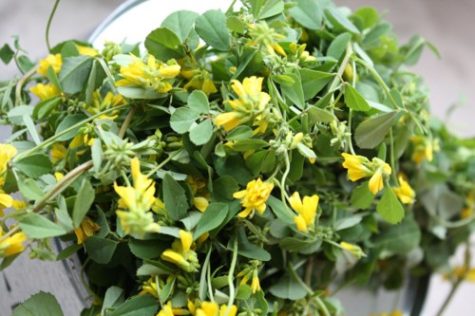
Fenugreek is used for kidney ailments, a vitamin deficiency disease called beriberi, mouth ulcers, boils, bronchitis, infection of the tissues beneath the surface of the skin (cellulitis), tuberculosis, chronic coughs, chapped lips, baldness, cancer, Parkinson’s disease, and exercise performance.
Fenugreek is sometimes used as a poultice. That means it is wrapped in cloth, warmed, and applied directly to the skin to treat local pain and swelling (inflammation), muscle pain, pain and swelling of lymph nodes (lymphadenitis), pain in the toes (gout), wounds, leg ulcers, and eczema.
How does it work?
Fenugreek appears to slow absorption of sugars in the stomach and stimulate insulin. Both of these effects lower blood sugar in people with diabetes.
In Indian traditional medical system, Ayurveda, it is used as an aphrodisiac, for rejuvenation, bronchial and digestive complaints, arthritis and gout.
Male related problems like painful testicles, premature ejaculation and loss of libido are relieved with the help of Fenugreek. Some men use Fenugreek for hernia, erectile dysfunction (ED), male infertility, and other male problems. The sprouts of Fenugreek are useful in promoting hair growth in men.
The seed is used in Ethiopia as a natural herbal medicine in the treatment of diabetes. It works effectively in painful menstruation, in improving lactation in nursing mothers. Fenugreek is mostly used for weight reduction, poor appetite and anorexia.
It is used in Chinese medicine to relieve kidney related pain such as back ache. Hernia and edema of legs is also relieved with Fenugreek.
Externally, Fenugreek is used for relieving ulcers, eczema, boils and cellulite.
In Cairo it is used under the name of Helba. This is an Egyptian preparation, made by soaking the seeds in water till they swell into a thick paste. Said to be equal to quinine in preventing fevers; is comforting to the stomach and has been utilized for diabetes. The seeds are soaked in water, then allowed to sprout, and when grown about 2 or 3 inches high, the green eaten raw with the seeds.
The seeds yield the whole of their odour and taste to alcohol and are employed in the preparation of emollient cataplasms, ointments and plasters.
They give a strong mucilage, which is emollient and a decoction of 1 OZ. seeds to 1 pint water is used internally in inflamed conditions of the stomach and intestines. Externally it is used as a poultice for abscesses, boils, carbuncles, etc. It can be employed as a substitute for cod-liver oil in scrofula, rickets, anaemia, debility following infectious diseases. For neurasthenia, gout and diabetes it can be combined with insulin. It possesses the advantage of being cheap and readily taken by children, if its bitter taste is disguised: 1 or 2 teaspoonful of the powder is taken daily in jam, etc.
There are conflicting results regarding the effects of Fenugreek on exercise performance. Some early research shows that taking 500 mg of Fenugreek supplement (Indus Biotech, India) for 8 weeks decreases body fat and increases testosterone levels, but does not change muscle strength or endurance in young men. However, other research shows that taking 500 mg of Fenugreek extract (Torabolic, Indus Biotech) daily for 8 weeks reduces body fat and increases leg and bench press performance in a similar group of young men.
Research shows that taking a specific Fenugreek product (FenuLife, Frutarom Belgium) before the two biggest meals of the day reduces symptoms of heartburn.
There is conflicting evidence about the effects of Fenugreek on cholesterol levels. Early research shows that taking Fenugreek seed reduces total and low-density lipoprotein (LDL or “bad”) cholesterol. But the effects of Fenugreek seed on high-density lipoprotein (HDL or “good”) cholesterol and triglycerides are inconsistent.
Early research suggests that taking Fenugreek seed oil drops by mouth three times daily for 4 months improves sperm count in men with a low concentration of sperm. But taking the other parts of the Fenugreek seed does not seem to have this effect.
Early research shows that a Fenugreek seed extract can reduce daily fat intake in overweight men when taken by mouth at a dose of 392 mg three times daily for 2-6 weeks. But a lower dose does not appear to have this effect. Neither dose affects weight, appetite, or fullness. Adding 4 or 8 grams of Fenugreek fiber to breakfast seems to increase feelings of fullness and reduce hunger at lunchtime. But it’s not clear if this increases weight loss.
In India the fresh plant is employed as an esculent.
Fenugreek seed contain steroidal saponins, including diosgenin, which is used in the manufacture of birth control pills. The bitter principle stimulates appetite and digestion and may be useful in cases of anorexia and stomach ulcers. It is an excellent agent to stimulate the flow of milk in nursing mothers and also has a stimulating effect on the uterus. In folk medicine it has been used as a contraceptive, and it has also been used to induce labor contractions.
In Chinese medicine pessaries containing Fenugreek seed are used to treat cervical cancer and laboratory studies have shown it to exert an inhibitive effect on cancer of the liver. Fenugreek also has some marvelous tissue healing properties.
The Ebers papyrus mentions Fenugreek in a recipe for an ointment that was used to treat burns and scalds. It was added to cosmetic lotions for chapped or cracked skin and it was thought to rejuvenate the tissues. A paste made from the seeds was also applied to abscesses, boils, burns and ulcers.
In Chinese medicine it is also used for abdominal pain, kidney problems, arthritis and beriberi, while in Ayurveda it is used to treat heart disease as well as spleen and liver enlargements.
Preparation and Dosage
Fenugreek is very bitter and generally taken in, seed powder capsules and extracts. If you wish to use Fenugreek to lower blood sugars, it is better to use the powder rather than the whole seed. The powder releases more vanadium as it is digested.
- Poultice: For external use, the seeds should be soaked and pulverized to make a poultice.
- Tea: Infuse 1/2 oz of seeds in 1 1/4 pints boiling water
- Tincture: Take 1 to 2 ml of the tincture three times a day.
- Decoction: Soak about 1/8 teaspoonful (½ gram) of the crushed seed in a cup of cold water for approximately 3 hours. Strain and take with honey several times a day for mild upsets, or soak 1 heaping teaspoonful (6 grams) of crushed seed for more severe complaints.
To increase milk production, gently simmer 1 1/2 teaspoon of the seeds in a cup of water for 1- minutes. Drink a cup three times a day. To make a more pleasant drink add 1 teaspoon of aniseed to this mixture.
Some research shows that consuming Fenugreek seed, mixed with food during a meal, lowers blood sugar levels after the meal in people with type 2 diabetes. However, while taking 5-50 grams of Fenugreek seed once or twice daily seems to work, lower doses of 2.5 grams don’t seem to work. In people with type 1 diabetes, taking 50 grams of Fenugreek seed powder twice daily seems to reduce the amount of sugar in the urine.
Painful menstrual periods (dysmenorrhea). Taking 1800-2700 mg of Fenugreek seed powder three times daily for the first 3 days of a menstrual period followed by 900 mg three times daily for the remainder of two menstrual cycles reduces pain in women with painful menstrual periods. The need for painkillers was also reduced.
- More remedies and cures can be found here: Folk Medicine Remedies and Cures – Fenugreek
As A Food Source
Fenugreek is best known as a powdered ingredient of curry powder, but it is also used for confectionery and as a pickle flavoring. The taste is bitter and peculiar, not unlike lovage or celery. Odor, similar.
The seeds are used in cooking, to make medicine, or to hide the taste of other medicine. Fenugreek seeds smell and taste somewhat like maple syrup. Fenugreek leaves are eaten in India as a vegetable.
Fenugreek is used as a herb (dried or fresh leaves), spice (seeds), and vegetable (fresh leaves, sprouts, and microgreens). Fresh Fenugreek leaves are cooked as a curry and the dried leaves are used for flavoring the dishes. Fenugreek seeds are roasted and powdered to sue in curry powders, stews, pickles and fried foods. The sprouted seeds can be included as a bitter but nutritious ingredient in mixed salads.
Fenugreek seeds are rich sources of protein, dietary fiber, B vitamins, iron and several other dietary minerals.
Sotolon is the chemical responsible for Fenugreek’s distinctive sweet smell. Cuboid-shaped, yellow- to amber-coloured Fenugreek seeds are frequently encountered in the cuisines of the Indian subcontinent, used both whole and powdered in the preparation of pickles, vegetable dishes dal, and spice mixes such as panch phoron and sambar powder. They are often roasted to reduce bitterness and enhance flavor.
Fresh Fenugreek leaves are an ingredient in some Indian curries. Sprouted seeds and microgreens are used in salads. When harvested as microgreens, Fenugreek is known as samudra methi. When sold as a vegetable in India, the young plants are harvested with their roots still attached and sold in small bundles in the markets and bazaars. Any remaining soil is washed off to extend their shelf life.
In Turkish cuisine, Fenugreek seeds are used for making a paste known as çemen. Cumin, black pepper, and other spices are added into it, especially to make pastırma.
In Persian cuisine, Fenugreek leaves are called “شنبلیله” (shanbalile). They are the key ingredient and one of several greens incorporated into ghormeh sabzi and eshkeneh, often said to be the Iranian national dishes.
In Egyptian cuisine, peasants in Upper Egypt add Fenugreek seeds and maize to their pita bread to produce aish merahrah, a staple of their diet.
Yemenite Jews believe Fenugreek, which they call hilbeh, hilba, helba, or halba “חילבה”, to be the Talmudic rubia “רוביא”. When the seed kernels are ground and mixed with water they greatly expand; hot spices, turmeric and lemon juice are added to produce a frothy relish eaten with a sop. The relish is also called hilbeh; it is reminiscent of curry. It is eaten daily and ceremonially during the meal of the first and/or second night of the Jewish New Year, Rosh Hashana.
- Recipes (and more) can be found here: Eating to Live – Fenugreek
Folklore and History
Although little known in Western countries, this little herb of the clover family has an ancient history, dating back at least 3500 years, to the famous Ebers papyrus. The ancient Egyptians not only used it for cooking, but also made a paste from the seeds, with which they embalmed their dead. It was also an ingredient of Kyphi incense, which was burnt in copious amounts for both secular and sacred occasions. Tukankhamen was entombed with seeds from this ancient herb.
In magick, Fenugreek can be used for psychic protection and grounding. It helps the practitioner to return to the here and now after a shamanic journey. It can help with centering and focusing one’s intention. It has also been used in money magic.
- More about the magickal uses of Fenugreek: Magickal Apothecary and Magickal Ingredients
Folk and Common Names
- Alholva
- Bird’s Foot
- Bockshornklee
- Bockshornsame
- Chandrika
- Egypt Fenugreek
- Fenogreco
- Fenugrec
- Foenugraeci Semen
- Foenugreek
- Greek Clover,
- Greek Hay
- Greek Hay Seed
- Hu Lu Ba
- Medhika
- Methi
- Methika
- Sénégrain
- Sénégré
- Woo Lu Bar.
Other Uses
Fenugreek is a modern source of imitation maple flavoring for syrups, candies, foods, beverages, tobacco, and other culinary items. Ground seeds are used also to give a maple-flavoring to confectionery.
In manufacturing, Fenugreek extracts are used in soaps and cosmetics.
In Asia and the Middle East Fenugreek plays integral parts in folk-medicine and herbalism, but Western countries at best tend to use it for veterinary purposes. Here, it is grown for fodder – the actual translation of the Latin name in fact means ‘Greek Hay’, as it is thought to be beneficial for cattle, keeping them healthy and increasing their milk.
Nearly all cattle like the flavor of Fenugreek in their forage. The ground seeds are utilized to an enormous extent in the manufactures of condition powders for horses and cattle; Funugreek is the principal ingredient in most of the quack nostrums which find so much favor among grooms and horsekeepers. It has a powerful odor of coumarin and is largely used for flavoring cattle foods and to make damaged hay palatable.
Cautions and Contraindications
Some people are allergic to Fenugreek, and people who have peanut allergy and chickpea allergy may have a reaction to Fenugreek.
Fenugreek is likely safe for people when taken by mouth in amounts normally found in foods. It is possibly safe when taken by mouth in amounts used for medicinal purposes (amounts larger than normally found in food) for up to 6 months.
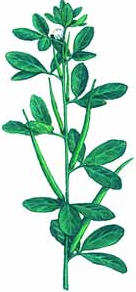 Side effects include diarrhea, stomach upset, bloating, gas, and a “maple syrup” odor in urine. Fenugreek can cause nasal congestion, coughing, wheezing, facial swelling, and severe allergic reactions in hypersensitive people. Fenugreek might lower blood sugar. Fenugreek seeds can cause diarrhea, dyspepsia, abdominal distention, flatulence, perspiration, and a maple-like smell to urine or breast milk.
Side effects include diarrhea, stomach upset, bloating, gas, and a “maple syrup” odor in urine. Fenugreek can cause nasal congestion, coughing, wheezing, facial swelling, and severe allergic reactions in hypersensitive people. Fenugreek might lower blood sugar. Fenugreek seeds can cause diarrhea, dyspepsia, abdominal distention, flatulence, perspiration, and a maple-like smell to urine or breast milk.
- Pregnancy: Fenugreek is likely safe in pregnancy. Fenugreek should not be taken medicinally when pregnant, however moderate use in food should be fine. It might cause early contractions. Taking Fenugreek just before delivery may also cause the newborn to have an unusual body odor, which could be confused with “maple syrup urine disease.” It does not appear to cause long-term effects.
- Breast-feeding: Fenugreek is possibly safe when taken by mouth to increase breast-milk flow in the short-term. Some research shows that taking 1725 mg of Fenugreek three times daily for 21 days does not cause any side effects in infants.
- Children: Fenugreek is possibly safe when taken by mouth in children. Some reports have linked Fenugreek tea to loss of consciousness in children. An unusual body odor resembling maple syrup may also occur in children drinking Fenugreek tea.
- Allergy to plants in the Fabaceae family: People who are allergic to other plants in the Fabaceae, including soybeans, peanuts, and green peas might also be allergic to Fenugreek.
- Diabetes: Fenugreek can affect blood sugar levels in people with diabetes. Watch for signs of low blood sugar (hypoglycemia) and monitor your blood sugar carefully if you have diabetes and use Fenugreek.
- Hypoglycemia: There is a risk of hypoglycemia particularly in people with diabetes; it may also interfere with the activity of anti-diabetic drugs. People undergoing management for hypoglycemia also should avoid Fenugreek.
- Hormone Sensitive Cancers: Fenugreek may affect uterine contractions and may be unsafe for women with hormone-sensitive cancers.
Drug Interactions
Because of the high content of coumarin-like compounds in Fenugreek, it may interfere with the activity and dosing of anticoagulants and antiplatelet drugs.
- Medications for diabetes (Antidiabetes drugs) interacts with Fenugreek
Fenugreek might decrease blood sugar. Diabetes medications are also used to lower blood sugar. Taking Fenugreek along with diabetes medications might cause your blood sugar to go too low. Monitor your blood sugar closely. The dose of your diabetes medication might need to be changed. - Medications that slow blood clotting (Anticoagulant / Antiplatelet drugs) interacts with Fenugreek
Fenugreek might slow blood clotting. Taking Fenugreek along with medications that also slow clotting might increase the chances of bruising and bleeding. - Warfarin (Coumadin) interacts with Fenugreek. Warfarin (Coumadin) is used to slow blood clotting. Fenugreek might also slow blood clotting. Taking Fenugreek along with Coumadin might increase the chances of bruising and bleeding. Be sure to have your blood checked regularly. The dose of your Warfarin might need to be changed.
Rennie Luttrull: queen-annes-lace-seeds
Rosanna: Spignel aka Bald Money
Annamarie Squatrito: Fumitory
EILEEN Klinghagen: Pumpkin
Mahmudul Hasan: Celery
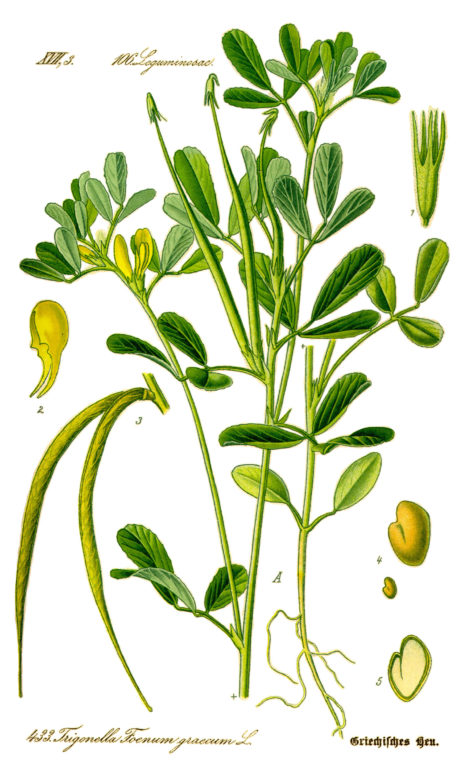
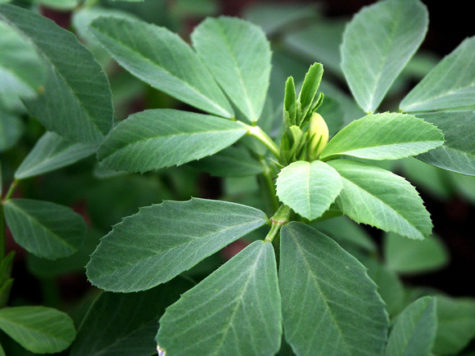
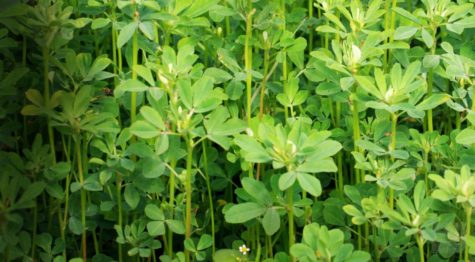
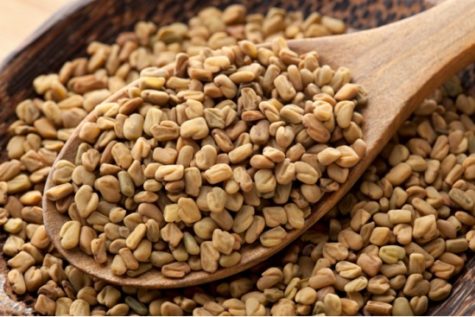
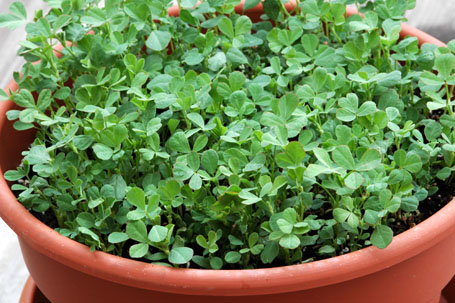
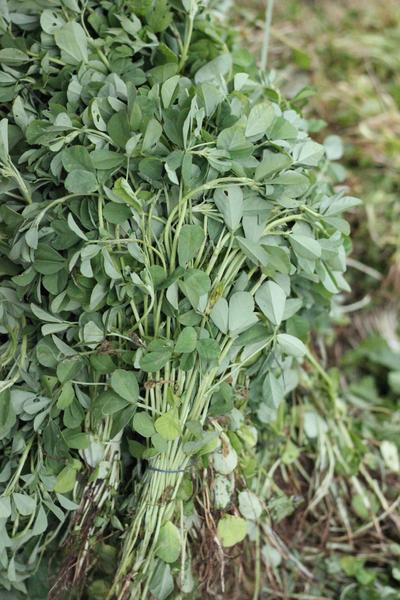


Leave a Reply